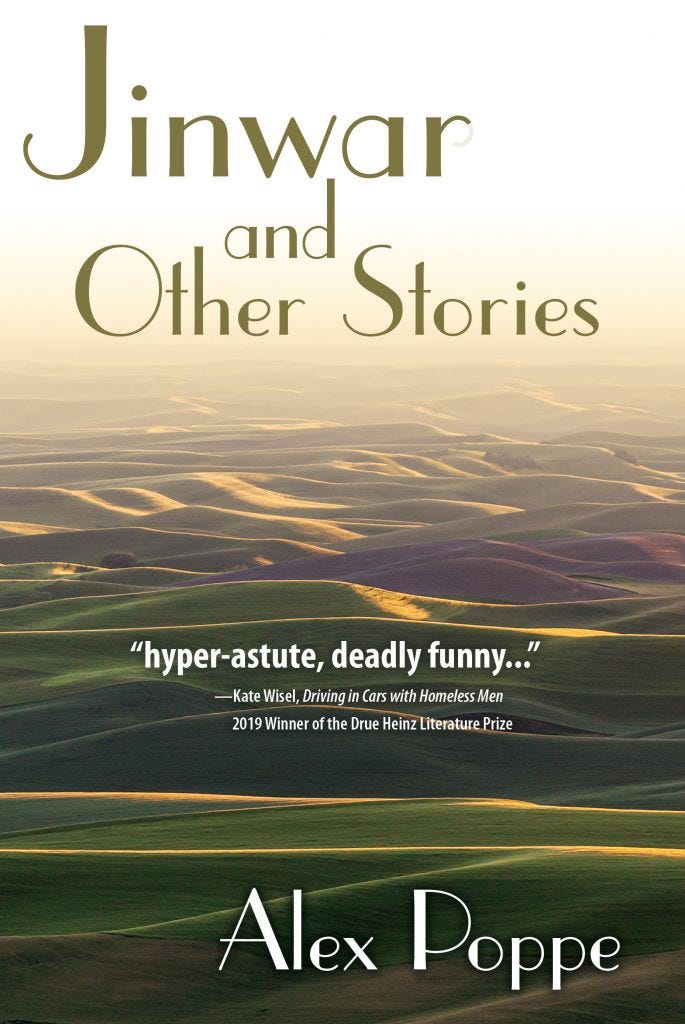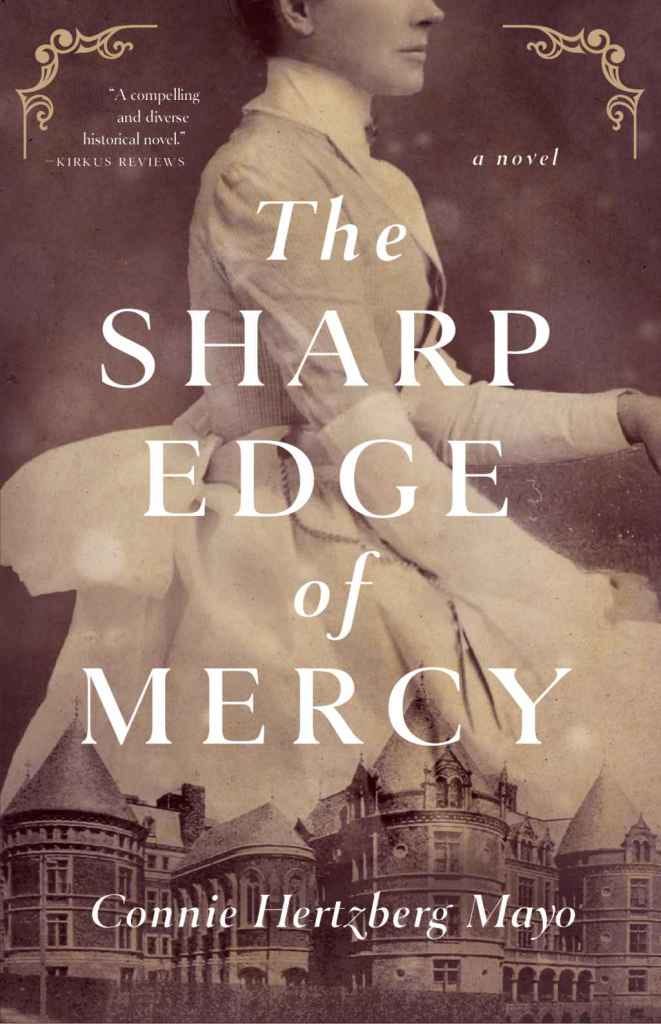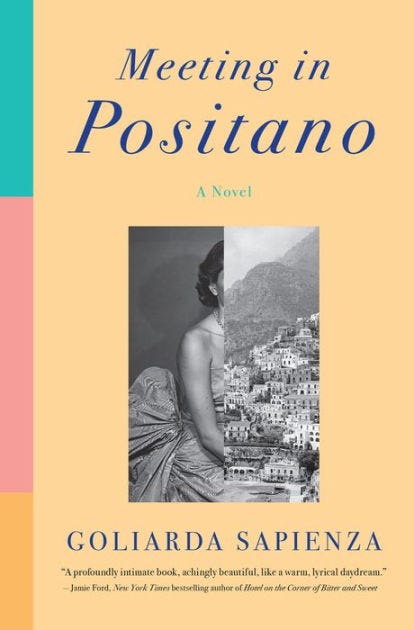Don’t let all the shiny new books make you overlook these outstanding backlist titles
Eight books from the last few years that should be part of your Fall-Winter reading plans
For passionate readers who keep up with the newest releases, it’s always tempting to read that shiny new buzz book. But we all have TBR lists with lots of books released in previous months or years. On Instagram you will occasionally see a hashtag promoting something like reading 10 books from your TBR before buying another new book. (Good luck with that!) I’m as guilty as anybody of letting books I once wanted to read linger on my list (or even on my bookshelf). Every time I bring a new book into the house, I know those earlier books are giving me the side eye.
So in the spirit of encouraging you to read some excellent books that may still be on your list or bookshelf — or that you haven’t heard of — here are eight backlist books that are well worth your time. I hope you find something here that makes you put off reading that exciting new book for a few days or weeks.
Irina is an Italian lawyer living in Switzerland with her husband Mathias and their two daughters, Alessia and Livia. Their marriage ends after years of tension, and they maintain a relatively cordial relationship for the benefit of the girls. But one weekend Mathias fails to bring the girls back. They’ve disappeared. Then Mathias’s body is found, an apparent suicide. But where are the girls? Dead, lost, hidden?
In The Missing Word, journalist and broadcaster Concita De Gregorio imagines Irina’s life following this traumatic event. In a fragmented first-person narrative, De Gregorio puts us in the mind of a mother bereft of her children and relentlessly searching for them. She examines everything and everyone in an attempt to stitch together an explanation and find the girls, even if, as she eventually concedes, they are dead.
The Missing Word is a riveting and heartbreaking exploration of parental love, memory, and the saving grace of words. But the missing word is one that describes a mother who has lost her children.
Barbara Linn Probst’s second novel, The Sound Between the Notes, is a portrait of a no-longer-young woman whose many compromises for family life eventually lead her to a search for self. Susannah Lewis gave up her ambitions to be a concert pianist, determined instead to be a devoted mother. Now, having succeeded in raising a “good kid,” Susannah yearns to return to her musical career. In the intervening decade and a half, she had continued to cultivate her musical gift through practice and lessons with the inspirational taskmaster of her youth, Vera.
Presented with an opportunity to perform her favorite piece, Schubert’s Piano Sonata No. 21 in B-Flat Major, at a huge arts fundraiser in Manhattan, she becomes obsessed with her “big chance” to achieve her long-delayed dream. At the same time, she is trying to exorcise the ghost of her birth mother, who gave her up for adoption at birth. The question of her mother’s identity and the reason she chose not to keep Susannah have long haunted her.
The Sound Between the Notes is an absorbing character study of a woman obsessed with artistic success after thinking her earlier life choices had made that impossible. It’s also a tightly plotted family mystery that probes questions of birth and adoptive family dynamics and their impact on the child in question, an examination of a marriage threatened by the protagonist’s dual obsessions, and an intimate look into the powerful spell that making music holds over musicians.
Fifteen-year-old Vera Johnson is the illegitimate daughter of Rose, the infamous madam of a bordello in the Barbary Coast section of town, and a father whose identity remains unknown to Vera until late in the story. Rose has farmed Vera out to be raised by a Swedish immigrant widow with a daughter of her own. Not surprisingly, Vera feels she has no real family and grows into a fiercely independent and street-smart girl. Her unsettled childhood has prepared her to adapt to a city and society in ruins. Vera begins shortly before the April 18 quake and follows Vera and her family and friends during a year that changes their lives.
While a scrappy and resourceful “orphan” is a well-worn character in historical fiction, Vera is always interesting. One of her first and best decisions is to head from her working-class neighborhood to Rose’s Victorian mansion in Pacific Heights, which she finds abandoned but only slightly damaged. Over the following weeks and months, she struggles to keep herself and her more proper “sister” safe in a lawless city, befriends some other survivors in the area and enters various mutual aid pacts, and attempts to locate Rose.
Vera is populated with memorable characters, including the imperious and cryptic Rose, her ruthless butler/driver/cook Tan, and a few girls from Rose’s brothel who become surrogate big sisters to Vera. Like Vera, they could have been predictable stock characters. But in Edgarian’s hands, they come to life with intriguing back stories and varied motivations. Watching Vera build relationships with the unorthodox adults in her life is one of the book’s richest elements. This coming-of-age story about a young woman and a city that didn’t play by the rules is a satisfying read.
Alex Poppe’s Jinwar and Other Stories is an unsparing look into the world of war in the Middle East, focusing on Syria and Kurdistan (Northern Iraq). The title novella and five accompanying stories take readers behind the scenes of the news reporting that has created the images we have about the people, places, and politics that have dominated foreign affairs for two decades.
These are gritty, closely observed depictions of women in the midst of the chaotic world of war and post-war situations, with countries working at cross-purposes both military and diplomatic, and NGOs attempting to alleviate the suffering and facing obstacles from every direction. In short, it is hellish.
Poppe balances the struggles of her characters with lots of gallows humor to leaven the brutality and senseless actions of a long list of military, rebel, and jihadist groups (primarily ISIS), all of which are oppressively patriarchal. This impressive collection can comfortably share shelf space with other stellar works of fiction by women about the wars in the Middle East like Roxana Robinson’s Sparta, Helen Benedict’s Sand Queen, Siobhan Fallon’s You Know When the Men Are Gone, and Lea Carpenter’s Eleven Days.
Set in New York City in 1893, The Sharp Edge of Mercy is the story of 18-year-old Lillian Dolan, a newly hired nurse assistant at the New York Cancer Hospital. She has fled her home after a dispute with her mother, taking her younger sister Marie, who has been left disabled by scarlet fever. She rents a tiny apartment on the edge of Hell’s Kitchen and has ambitions of being a nurse. She has her hands full learning on the job and finding a caregiver for her sister. Fortunately, her older cousin Michael is her guardian angel and helps her make rent and sort out other difficulties.
Through Lillian’s experiences at the hospital and beyond, the novel explores medical ethics, sexual mores, and race, class, and ethnic relations. Her work ethic, cast iron stomach, and critical thinking eventually make an impression on a couple of the nurses and the new head surgeon, Dr. Bauer. But as she makes her way at the hospital, she finds herself enmeshed in workplace power struggles. At the same time, Michael is introducing the sheltered Lillian to the realities of turn-of-the-century New York City, forcing her to reconsider some of her strict Catholic viewpoints.
Lillian is a compelling protagonist, a young woman of her time, yet in many ways ahead of her time. Her open heart and strong sense of right and wrong serve her well in a New York City that chewed people up, especially the poor and working class. She is such a strong character that one hopes to see a sequel. The conclusion offers several potential paths for Lillian and her friends and family to pursue.
Sometimes a book speaks to you so powerfully that you feel compelled to tell everyone about it. The Yield is such a book. Tara June Winch is an Australian who belongs to the Wiradjuri people of central New South Wales. Weaving together three narrative strands, Winch tells the heartbreaking story of the attempted genocide of Aboriginal Australians, first by British colonizers and then by Australians in the 20th century, followed by government policies and a national culture that has marginalized Indigenous people.
In alternating chapters, we encounter a multi-part letter written in 1915 by a clergyman describing the horrifying treatment of the Wiradjuri people by white people who claim to be Christians; a dictionary of the Wiradjuri language written in the early 21st century by an elder of the Wiradjuri community hoping to save their dying language and culture; and the story of his granddaughter’s return to the family property after 10 years in London.
The heart of The Yield concerns August Gondiwindi, who is living in self-imposed exile in England when she learns that her grandfather Albert, who raised her, has died. Twenty years after her sister Jedda’s disappearance when she was 10, August returns to the western New South Wales farming town of Massacre Plains for Poppy Albert’s funeral. In doing so, she is forced to confront the consequences of the racism and poverty of her childhood, complicated relationships with her extended family, and the oppressive cultural and economic limitations of rural Australia. Taken together, the three strands of The Yield depict the unrelenting theft of land and resources from the First Nations people of Australia, starting with the arrival of the “First Fleet” in 1788 and continuing for more than two centuries up to the events of this story.
Caitlin Hamilton Summie’s To Lay to Rest Our Ghosts is a stellar ten-story collection that deserves your attention. As the title suggests, Summie’s characters are at crossroads of various kinds; they are struggling for emotional independence, attempting to resolve long-standing conflicts (usually familial), and trying to make sense of a complex and confusing world. These are quiet, intimate stories driven by character more than plot, yet they are compelling in both their dramatic tension and often unsettling (but not unsettled) resolution.
Set mostly in rural and urban Minnesota, with detours to and New York City, these stories are probing examinations of the seemingly small, mundane moments that reverberate through our lives. Life-changing decisions or events do not always arrive in the form of violent confrontations or shocking accidents. Sometimes it’s as simple as looking at old family photo albums (as in “Patchwork”) or failing to show up at your grandfather’s deathbed because you just can’t bear it (as in “Geographies of the Heart”).
Summie’s empathy for her characters’ humanity is so strong, and her prose so lovely, that a palpable warmth emanates from the stories despite their physically frigid settings. I look forward to the publication of her first novel; the trilogy in this collection suggests that she will be equally accomplished with the longer form. [Geographies of the Heart was published in January 2022.]
Goliarda Sapienza may be virtually unknown to Americans, but in Italy she was a famous stage and screen actress in the 1940s and 1950s who turned to writing autobiographical works and fiction in the 1960s. Sapienza worked with some of Italy’s most famous filmmakers and became part of the intellectual elite. She was shaped in part by her experiences during World War II. In 1943, at age 19, she took a break from her acting studies to join an anti-fascist brigade, and she remained an outspoken political activist throughout her career.
Unfortunately, her frank and unconventional writing found little success in her lifetime. Most of her work was published after her death in 1996. Meeting in Positano, written in 1984, was not published in Italy until 2015 and it is only now being published in English. In Meeting in Positano, Sapienza tells a story, based on her own experiences, of an unusual friendship with a mysterious young widow named Erica in the isolated town on the Amalfi Coast during the 1950s, before it became a famous getaway favored by celebrities. It is a tribute to a very specific time and place and to a particularly intense friendship with a woman who could not have been more different.
Meeting in Positano is both an intriguing dual character study of two unusual women and a love letter to a town that no longer exists in its charming 1950s incarnation, before new roads made it easier to reach. Goliarda describes Positano as “a place that was still isolated from the barbaric advances of products, merchandise, and urban madness.” Erica tells Goliarda why spending time there, escaping from her life in Milan, has been crucial. “Positano can cure you of anything. It opens your eyes to your past suffering and illuminates your present ones, often saving you from making further mistakes. It’s strange, but sometimes I get the impression that this cove protected by the bastion of mountains at its back forces you to look at yourself square in the face, like a ‘mirror of truth,’ while this great sea, usually so calm and clear, similarly inspires self-reflection.”










